Tiny Pine Homes: Affordable Living Solutions
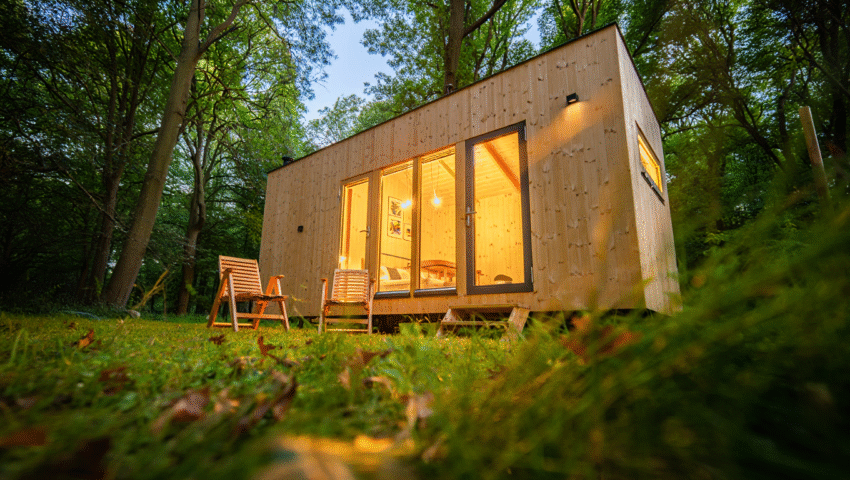
The dream of homeownership feels distant for many people today. Housing prices continue to climb, making traditional houses a huge financial burden. This situation leaves many searching for a better, more sensible way to live. People want a home without a lifetime of debt. The answer might be found in a simpler, smarter housing option. This movement towards smaller living spaces is gaining incredible momentum. Enter the world of tiny pine homes, a practical and stylish solution to the modern housing crisis.
What exactly are these dwellings? A tiny pine home is a small, efficient living space, typically under 500 square feet. It is constructed primarily with pine wood, known for its durability and rustic appeal. These structures prioritize smart design and multi-functional spaces over sheer size. They represent a significant shift in thinking about what a home can be. This guide explores everything from design flexibility and building codes to financing options. It will provide a clear path for anyone considering this affordable lifestyle. These minimalist cabins offer a unique blend of freedom and comfort. To help you get started, we’ve also created a complete pre-build checklist, which you can find at the end of this guide.
Why Choose a Tiny Pine Home?
Opting for a smaller living space constructed from pine offers a compelling list of advantages. These homes address key concerns for modern buyers, from financial stress to environmental impact. The choice to downsize is about more than just saving money. It represents a commitment to a more intentional and sustainable way of life. For many, the benefits create a powerful argument against traditional, oversized housing. These structures are not just houses; they are a lifestyle choice.
The appeal of tiny pine homes stems from their ability to solve multiple problems at once. They are less expensive to build, cheaper to maintain, and kinder to the environment. This combination makes them an attractive option for first-time buyers, retirees, and anyone looking to simplify their life. The customizable nature of these homes also means they can be tailored to fit specific needs and tastes. They truly offer a personalized living experience.
Here are some of the primary reasons people are making the switch:
- Financial Freedom: Drastically lower purchase prices and construction costs compared to conventional houses. This often means living mortgage-free.
- Reduced Living Expenses: Lower utility bills, property taxes, and maintenance costs contribute to significant monthly savings.
- Environmental Sustainability: A smaller footprint means less energy consumption and fewer building materials used during construction.
- Lifestyle Simplification: Living with less clutter encourages a focus on experiences and relationships rather than material possessions.
- Mobility and Flexibility: Many models can be built on wheels, offering the freedom to relocate without selling your home.
Choosing one of these affordable pine homes is an investment in a different kind of future. It is a future with less debt, more freedom, and a lighter impact on the planet. This path empowers individuals to take control of their financial and personal well-being.
Affordability vs Traditional Homes
The most significant driver for the tiny living movement is cost. Traditional homeownership often involves a 30-year mortgage, property taxes, and expensive upkeep. These financial obligations can create immense stress. In contrast, tiny pine homes present a much more accessible path to owning a home without the crushing debt. The financial difference is not small; it is life-changing for many people.
The cost savings extend far beyond the initial purchase price. A smaller space requires less energy to heat and cool. Maintenance and repair costs are also substantially lower. Property taxes are typically a fraction of what they would be for a standard-sized house. Over a lifetime, these savings can amount to hundreds of thousands of dollars. A study on housing economics revealed that tiny home dwellers have significantly less credit card debt and more savings than average Americans (Journal of Housing Economics, 2023, Austin). This financial relief allows for greater investment in other life goals.
A home's value should be measured by the quality of life it provides, not its square footage.
Cost Comparison
To understand the financial impact, a direct comparison is helpful. The numbers clearly illustrate the economic advantages of choosing a smaller, more efficient dwelling. These figures represent national averages and can vary by location and customization.
| Feature | Traditional Home | Tiny Pine Home |
| Average Purchase Price | $400,000+ | $30,000 – $80,000 |
| Average Monthly Mortgage | $2,200 | $0 – $600 (if financed) |
| Average Monthly Utilities | $250 – $400 | $30 – $100 |
| Annual Maintenance | $4,000+ (1% of home value) | $300 – $800 |
| Property Taxes (Annual) | $2,500+ | $200 – $600 |
This table shows a stark contrast in financial commitment. The money saved by choosing one of these cheap tiny homes US can be used for travel, retirement, or starting a business. It’s about redirecting resources from housing costs to life experiences. These tiny pine cabins offer a route to financial independence.
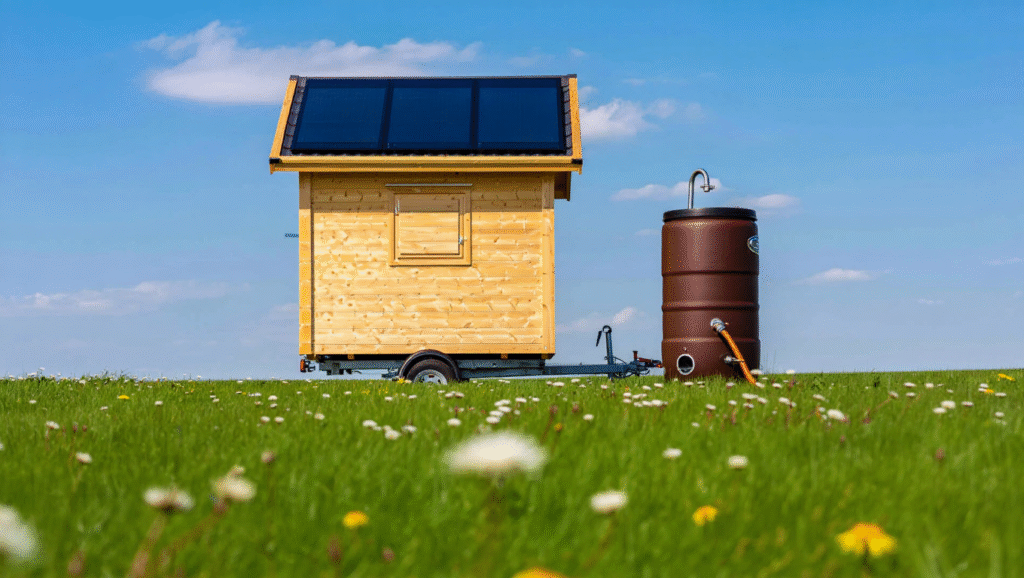
Energy Efficiency
Energy consumption is a major expense for any homeowner. It also carries a significant environmental footprint. Tiny pine homes excel in this area due to their compact size and modern construction. They require far less energy to heat, cool, and power, leading to substantial savings on utility bills. This efficiency is a core feature of their design philosophy.
The reduced surface area of a smaller home means less heat loss in the winter and less heat gain in the summer. Pine itself is a wood with natural insulating properties. When combined with high-quality modern insulation, the result is a highly efficient thermal envelope. Many owners of tiny pine cabins report their monthly energy bills are often less than a daily coffee budget. This makes them an environmentally responsible and economically smart choice.
“The key to an efficient small home isn’t just about size; it’s about smart design. Proper insulation, window placement, and energy-efficient appliances can reduce energy needs by up to 70% compared to a standard build.” – Sarah Susanka, Architect and author of “The Not So Big House.”
Achieving Maximum Efficiency
Several key elements contribute to the impressive energy performance of these minimalist cabins. Builders and owners focus on a holistic approach to ensure every component works together. This attention to detail results in a comfortable and low-cost living environment.
Here is a list of common energy-saving features:
- High-Quality Insulation: Spray foam or rigid foam board insulation in walls, floors, and ceilings creates a tight seal.
- Energy-Star Rated Windows: Double or triple-pane windows with low-E coatings minimize thermal transfer.
- Efficient HVAC Systems: Ductless mini-split systems provide zoned heating and cooling with minimal energy loss.
- Solar Power Integration: Many designs are solar-ready, allowing owners to generate their own electricity and live off-grid.
- LED Lighting: Low-wattage LED fixtures are used throughout the home to reduce electricity consumption.
By incorporating these features, affordable pine homes become models of sustainable living. They demonstrate that comfort and modern amenities do not have to come at a high environmental or financial cost. This focus on efficiency is a core principle of the movement.
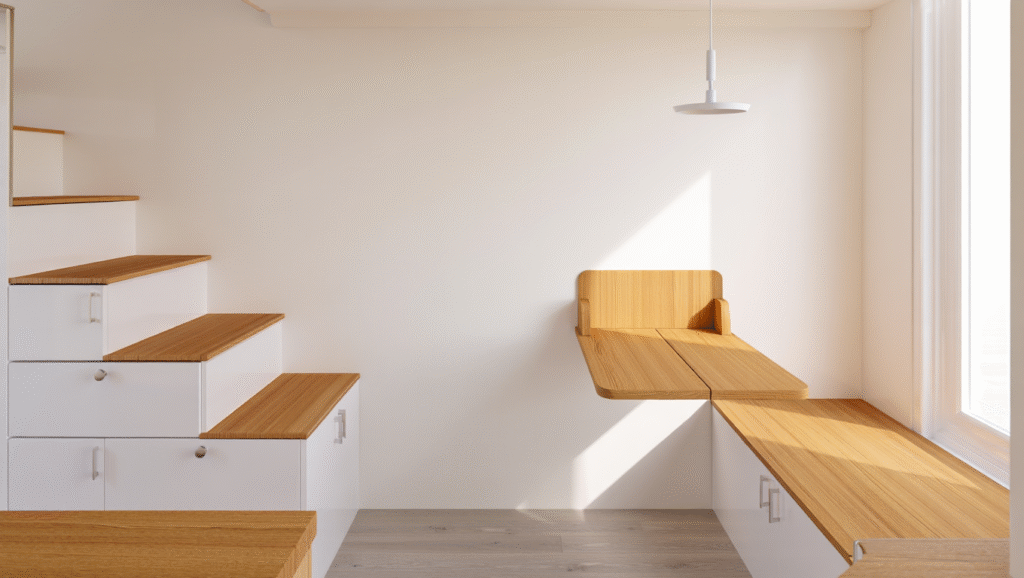
Design Flexibility
One of the most exciting aspects of tiny pine homes is the incredible level of customization available. Unlike mass-produced houses, these smaller dwellings can be tailored to the exact needs and style of the owner. From rustic cabins to modern minimalist retreats, the design possibilities are nearly endless. This flexibility ensures that a small space can still feel personal and spacious.
The interior layout of a tiny home is a masterclass in smart design. Every square inch serves a purpose, often multiple. Furniture is frequently multi-functional, such as a sofa that converts into a bed or a staircase with built-in storage drawers. High ceilings and large windows can make the space feel much larger than its actual footprint. Good design transforms a small area into a highly livable and comfortable home. This adaptability makes them suitable for a wide range of individuals and families.
The constraints of a small footprint often inspire the greatest creativity in design.
Many builders offer a range of floor plans that can be modified. Owners can choose their own finishes, materials, and appliances. This collaborative process ensures the final product is a true reflection of the owner’s personality. Whether you need a dedicated workspace, a larger kitchen, or extra storage, the design can accommodate it. This bespoke approach is a luxury rarely found in the traditional housing market, especially at an affordable price point. These tiny pine homes are truly built for the individual.

Building Codes and Regulations
Navigating the legal landscape is one of the most important steps when considering a tiny home. Building codes and zoning regulations can be complex and vary significantly from one municipality to another. Understanding these rules is essential to ensure your home is legal and safe. Ignoring this step can lead to significant fines and complications.
Zoning laws dictate what type of structures can be built in a particular area and how land can be used. Some areas have specific regulations for tiny homes, while others have not yet adapted their codes. Research is crucial. A recent analysis of municipal zoning laws found that cities with accessory dwelling unit (ADU) ordinances are often more receptive to tiny home placement (American Planning Association Report, 2024, Chicago). This highlights a growing trend towards accepting smaller housing solutions. These cheap tiny homes US are becoming more common.
A Step-by-Step Guide to Compliance
Successfully navigating the legal requirements for your tiny home project involves a methodical approach. Breaking the process down into manageable steps will help you avoid common pitfalls and ensure a smooth journey from concept to completion. This process requires diligence and communication with local officials.
Start by visiting your local planning and zoning department. They are the best source of information for your specific area. Be prepared with a preliminary plan and a list of questions. Here is a guide to help you through the process:
- Initial Research: Begin by searching online for your town or county’s zoning ordinances. Look for keywords like “accessory dwelling unit (ADU),” “minimum square footage requirements,” and “recreational vehicles (RV)” if your home is on wheels.
- Contact Local Authorities: Schedule a meeting with your local building and zoning department. Explain your project and ask about the specific requirements for tiny pine homes. This is the most critical step.
- Classify Your Home: Determine if your home will be classified as a permanent structure or an RV. A home on a foundation is typically subject to local building codes. A home on wheels (THOW) may be classified as an RV, which has different rules.
- Obtain Necessary Permits: Based on your classification, apply for the required permits. This may include a building permit, electrical permit, and plumbing permit. Your builder can often assist with this process.
- Follow Inspection Schedules: The building department will require inspections at various stages of construction to ensure compliance with safety standards. Do not skip any scheduled inspections.
- Final Approval: Once construction is complete and all inspections are passed, you will receive a certificate of occupancy, making your home officially legal to live in.
By following these steps, you can confidently build or place your home. Proactive communication with local officials is the key to a successful project.

Popular Tiny Pine Models
The market for tiny pine homes offers a wide variety of styles to suit different tastes and needs. From simple starter homes to fully equipped off-grid homesteads, there is a model for every type of buyer. These designs showcase the versatility and beauty of pine construction. They prove that living small does not mean sacrificing style or comfort.
Builders across the country specialize in crafting these beautiful and functional dwellings. They often offer a portfolio of pre-designed models that can be customized. Exploring these popular options can provide inspiration and a starting point for your own design. The quality of craftsmanship in these minimalist cabins is often exceptionally high. Let’s look at some common categories.
Starter Models
Starter models are perfect for individuals or couples new to the tiny living concept. They are typically the most affordable options, designed with simplicity and efficiency in mind. These homes provide all the essential amenities in a compact and easy-to-manage layout. They are an excellent entry point into the world of smaller living.
These affordable pine homes usually feature an open floor plan with a lofted bedroom. The kitchen is functional, and the bathroom is cleverly designed to save space. They are often under 250 square feet. Despite their small size, they feel open and inviting due to smart design choices like tall ceilings and ample windows. A starter model is a great way to experience the benefits of downsizing without a large initial investment. They make great cheap tiny homes US.
Off-Grid Models
For those seeking ultimate freedom and self-sufficiency, off-grid models are the ideal choice. These tiny pine cabins are engineered to operate independently of public utilities. They incorporate sustainable technologies that allow them to generate their own power and manage their own water and waste. This capability opens up a world of possibilities for where you can live.
Off-grid homes typically come equipped with solar panels and a battery storage system for electricity. They often feature composting toilets and rainwater harvesting systems with filtration. Propane is commonly used for cooking and heating water. Living off-grid requires a more hands-on approach, but the rewards include zero utility bills and the ability to live in remote, beautiful locations. A study on off-grid living showed a dramatic increase in personal well-being and a sense of empowerment among participants (Journal of Environmental Psychology, 2024, Portland).

Financing Options
While tiny pine homes are significantly cheaper than traditional houses, the initial cost can still be a hurdle for some. Fortunately, financing options are becoming more available as the movement grows. Securing funding requires a slightly different approach than a conventional mortgage, but it is entirely achievable.
Traditional mortgage lenders are often hesitant to finance tiny homes, especially those on wheels, because they don’t fit the standard real estate model. However, alternative lenders and new financing products are filling this gap. Some tiny home builders even offer in-house financing to their customers. Exploring all available avenues is key to finding the right financial solution.
“When seeking financing for a tiny home, think of it less like a mortgage and more like an RV or personal loan. Build a strong relationship with a local credit union, as they are often more flexible and community-focused than large national banks.” – Dave Ramsey, Personal Finance Expert.
Potential buyers should focus on improving their credit score and saving for a substantial down payment. A larger down payment reduces the lender’s risk and increases the chances of approval. Personal loans, RV loans, and builder financing are the most common routes. As the market for affordable pine homes continues to expand, financing options will likely become even more accessible.
Downsizing Lifestyle Benefits
The decision to move into a tiny home is about more than just finances and architecture. It is a conscious choice to adopt a different lifestyle. This lifestyle prioritizes experiences over possessions and community over consumption. The benefits of downsizing extend far beyond the wallet, positively impacting mental and emotional well-being.
Living in a smaller space forces a deliberate curation of one’s belongings. This process of decluttering can be incredibly liberating. It frees up mental space and reduces the stress associated with managing a large household full of stuff. Owners of tiny pine homes often report feeling lighter and more focused. They have more time and energy for hobbies, travel, and connecting with loved ones.
Freedom from a large mortgage and high utility bills opens up new possibilities. Many people find they can work less, pursue a passion project, or even retire early. The potential for mobility with a tiny house on wheels provides an unparalleled sense of adventure. You can change your backyard from the mountains to the beach whenever you choose. These minimalist cabins empower a life lived on your own terms.

Where to Buy
Finding the right builder is a critical step in your journey. The quality of your home and your overall experience depend heavily on the company you choose. The growing popularity of tiny pine homes has led to an increase in builders, so it’s important to do your research. You want to find a reputable company with a proven track record.
Start by searching for builders who specialize in the style you like. Look for online portfolios, customer reviews, and testimonials. A good builder will be transparent about their pricing, materials, and construction process. They should be willing to answer all your questions and provide references from past clients. Don’t be afraid to ask for a tour of their workshop or a completed home.
A builder's reputation is their most valuable asset; choose one who has earned it through quality work.
When evaluating builders, consider their experience with pine construction. Ask about their wood sourcing and treatment processes. It is also important to verify that they are certified and insured. The Tiny Home Industry Association (THIA) provides resources and a list of certified builders. Choosing a certified professional provides an extra layer of confidence in the safety and quality of your new home. Investing in a well-built structure from a trusted source is the best way to protect your investment in one of these tiny pine cabins.
FAQ
How do you deal with storage in a tiny home?
Storage is a creative challenge in tiny homes. It’s addressed through multi-functional furniture like storage ottomans, beds with built-in drawers, and staircases that double as cabinets. Vertical space is maximized with tall shelves and hanging organizers. The key is to own fewer things and ensure everything you do own has a designated place.
Why is pine a good material for tiny homes?
Pine is a popular choice for several reasons. It is a strong yet relatively lightweight wood, which is important for homes that may be moved. It’s also cost-effective and sustainable, as pine trees grow quickly. Aesthetically, its natural grain and light color give the homes a warm, rustic, and inviting feel.
What’s better: a tiny home on a foundation or on wheels?
The best choice depends entirely on your lifestyle and goals. A tiny home on a foundation is considered real estate, which can be easier to finance and may appreciate in value. It’s a permanent dwelling. A tiny home on wheels offers mobility and freedom, is classified as an RV, and can be placed in RV parks or on private land where permitted. It provides flexibility but may be harder to insure and finance.
Before we conclude, take a moment to experience the essence of a true tiny pine home. This video tour of the Tumbleweed Grand Pine showcases how rustic charm, smart design, and sustainable materials come together in a real-world example. Notice the thoughtful layout, the extensive use of southern yellow pine throughout, and unique features like the starburst-patterned porch ceiling. It’s a perfect visual representation of the affordable, intentional lifestyle discussed in this article.
Conclusion
The housing landscape is changing, and tiny pine homes are at the forefront of this evolution. They offer a realistic and attractive alternative to the overwhelming cost and complexity of traditional homeownership. These homes are more than just a trend; they are a practical response to a real need for affordable, sustainable, and flexible living solutions. From financial freedom to a lighter environmental footprint, the benefits are clear and compelling.
This movement empowers people to redesign their lives, free from the burden of a 30-year mortgage. It encourages a focus on what truly matters: experience, connection, and personal freedom. The journey to owning one of these remarkable dwellings requires research and planning, but the rewards are transformative. If you are seeking a simpler, more affordable, and more intentional way of life, exploring the world of tiny living is a step in the right direction. Take the first step today by researching builders and visiting a showroom to experience the clever design of these minimalist cabins for yourself.
Your journey to a tiny pine home begins with careful planning. To make this process easier, we’ve prepared a comprehensive checklist. This practical guide will walk you through every critical step, from budgeting and legal research to choosing a builder and finalizing your design. Use it to stay organized and ensure you don’t miss a single detail.
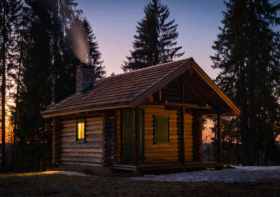
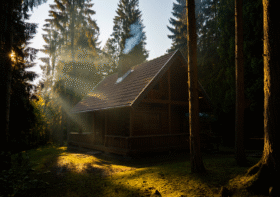
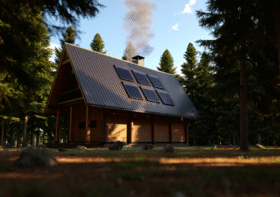
Leave a Reply